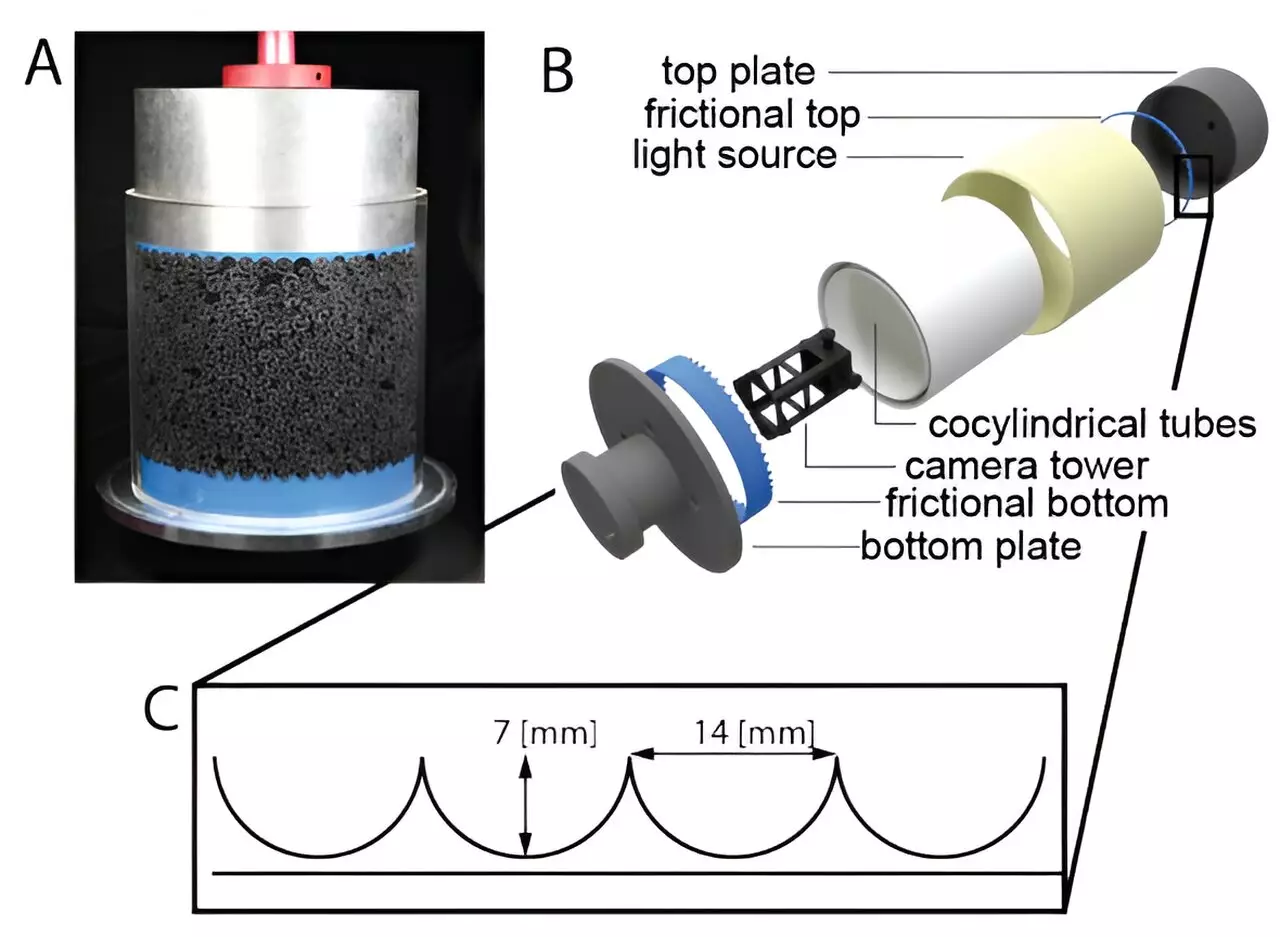Granular materials, such as sand, have always intrigued scientists due to their unique properties. When we walk on the beach, the sand feels solid and hard to compress. However, when the same sand grains are placed in an hourglass, they flow like a liquid. This behavior has motivated researchers to study granular materials in depth and explore their potential applications.
Recent research conducted by scientists from the University of Amsterdam and Santiago in Chile has resulted in the development of new granular materials that can be easily compressed. This breakthrough is significant as it opens up possibilities for applications such as shock dampening. By modifying the structure of the granular materials, the researchers have achieved the desired compressibility and flow properties.
Along the coast of Japan, one can find tetrapods, massive concrete blocks with a four-legged design that serve to prevent erosion of coastal structures. These tetrapods collectively form a granular metamaterial, mimicking the behavior of sand. The unique shape of tetrapods makes them resistant to flow, unlike traditional boulders. This example showcases the ease of creating granular systems that are highly incompressible and have limited flowing capabilities.
In the field of metamaterials, researchers have focused on manipulating the geometrical properties of materials to achieve desired responses. By applying this concept to granular materials, the team of scientists successfully demonstrated the control of compressibility and flow behavior. The grains they developed shrink radially under external pressure, maintaining consistent spacing between the grains even when compressed. This innovative approach has led to the creation of granular materials that are both easy to compress and flow efficiently.
The newly designed granular materials have shown great potential in shock dampening applications. When a metal disk is dropped into a packing of these grains, it decelerates gradually and minimizes bounce-back. This results in a more uniform distribution of energy, making it ideal for scenarios such as cushioning in speed skating races. The improved shock absorption provided by these materials can offer enhanced safety and performance benefits in various situations.
The development of new granular materials with tailored compressibility and flow properties represents a significant advancement in material science. By harnessing the principles of metamaterial design, researchers have unlocked a new realm of possibilities for the use of granular materials in diverse applications. From improving shock dampening to enhancing structural stability, the potential benefits of these innovative materials are vast. As further research and development are conducted in this field, we can expect to see more groundbreaking discoveries that leverage the unique characteristics of granular materials for various practical purposes.


Leave a Reply